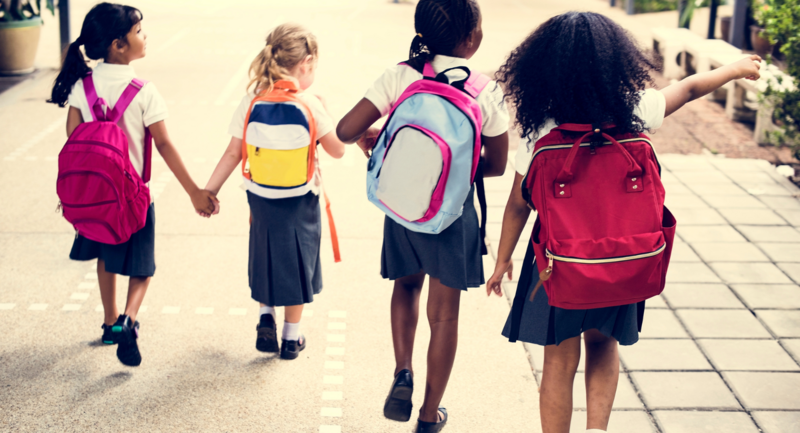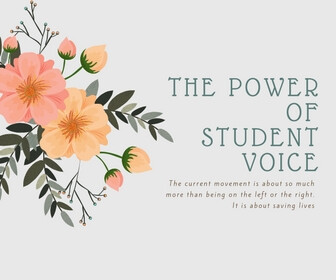This blog post is part of an ASCD partnership with Wonder Media. To see all blog posts from Wonder Media on the 16 Habits of Mind, you can click here.
Don’t forget to submit to the Habits of Mind Time Capsule! For submission form, click here.
One of my favorite quotes about Remaining Open to Continuous Learning is from Alvin Toffler: “The illiterate of the 21st century are not those who cannot read and write but those who cannot learn, unlearn and relearn.” With the speed of change in the modern world this is a necessity!
One of the visuals I used to do at workshops would represent the growth of information. I used to use a length of rope as the model. I would grasp a league’s worth of a long piece of rope (Yeah, I can see some of you Googling “league” right now! You are living this habit of mind!) to represent all of the information accumulated in the first 10,000 years of early human existence. The great cultures of Egypt, Greece, Rome, Mesopotamia were all included in that length of rope. It took only about 1,000 years to double the length of that piece of rope; what had taken 10,000 years to accumulate was now equaled in only 1,000 years. Five hundred years saw the doubling of information yet again; the doubling time continued in about half the time of the prior time period. You can begin to see that that length of rope became more than I could handle myself as the doubling of information is now taking less than a year. How can any one person know that much stuff? They can’t.
I was participating in a workshop where the presenter asked each of us in turn what we taught. We answered with the different subjects we taught: science, math, and so on. The presenter then said something that made me change my perspective forever: “You all teach kids! The subjects don’t matter!” Wow, epiphany. “The subjects you each teach are just a tool you each use to teach children!”
In his book “Future Wise”, David Perkins asks us to identify what learning we consider “lifeworthy”: valuable in our lives for the long term, for years and years to come. He begins his book by asking his readers what topics or concepts we still use today from your K-12 education? Interesting question! I taught science for my entire career and have to admit that much of the content I taught is not going to be “lifeworthy” for most students. The phases of mitosis are not going to be utilized on a day to day basis for most people. So, one has to ask, how do we determine what truly is worth knowing?
Perkins points out that the context in which we teach is important. Do we use what we are teaching as a topic or a tool? A topic would be something that we teach for its own value. We can ask ourselves, is it something that is important to add to our knowledge library? Or, is what we are teaching a tool: something that is used as practice for some other purpose.
A baseball pitcher spends hours, maybe days, throwing the ball to a catcher without a batter in place. Why? His practice is a tool that is getting him ready for the challenge of getting that ball past a batter when the time comes. Science and math are tools for teaching reasoning, a lifeworthy concept. It isn’t that the quadratic equation is going to be valuable in your day to day life, but the reasoning certainly will be. Science teaches the scientific method which is used in just about every walk of life and on a daily basis. A doctor and a car mechanic both use the scientific method in plying their trades. “Why won’t this car run?” is the first part of the scientific method, asking the question. The doctor also begins their diagnosis by asking that same type of question, “What symptoms are my patient exhibiting?” From there, both go on to formulate a hypothesis, “what is it that will fix this problem”? They both go on to test that hypothesis by treating their patient whether they be flesh and blood or metal, plastic and rubber. If their test is successful, they will collect more data about their procedure with their patients getting better or not and then they reapply the scientific method. Why, or, why didn’t my patient respond? It wasn’t the content of the science or math classroom that was important, it was the thinking process that was used in those classes that allowed the work to be accomplished.
Reading in an English class teaches about cultures and relationships. What makes the classics, the classics? They describe timeless truths that still apply to the lives of people today. Social Studies helps us so that we do not repeat the mistakes of our past. It is not the topic we are utilizing as much as it is a tool to teach that greater lifeworthy lesson which one can apply.
I just finished Seymour Sarason’s “And What Do You Mean by Learning?” in which he begins that we are wired for learning from birth. He asks if we have ever watched how an infant gathers data about their world? Any parent knows that they go through that phase where they touch everything, stick just about anything in their mouth and want to do whatever the big people in their life are doing. Learning is an innate part of being human and remaining open to continuous learning is vital.
Now, the real challenge is to determine what it is that is important for us to learn in life? New technologies have created a daunting challenge for today’s educators. How do we compete with those beeping, dinging, singing pieces of electronics in their backpacks and their pockets? Facebook, SnapChat, Twitter and other social media is dominating their learning experience, but one has to question the life-worthiness of that learning. One of the pieces of technology I found useful as a tool was called Quizlet. I could enter the vocabulary for the unit with the definition and the program would generate a number of game-like learning activities for the learner. It became a contest to see who could successfully navigate one of the review aspects the fastest. I have to admit that I had a hard time duplicating their successes! And, they often asked me to create a new lesson for the following unit! Using the technology as a tool tricked them into learning the content. Minecraft has been harnessed as a learning tool in many classrooms as have other digital activities that were designed initially as games.
Learning is a genetic predisposition of our species but guiding that learning in meaningful directions is our challenge. But humans will rise to a challenge if it is found to be valuable. I’m still learning what the flashing lights, dings and icons mean on the dash of my most recent vehicle. A new cell phone creates new challenges that we want to learn as quickly as possible, so we can harness the power of the technology to change our lives. You have to admit, had humans not learned and taught each other about controlling fire, making stone tools and other survival skills you would not be reading this entry right now.
Some of the wealthiest people on Earth spend at least 5 hours a day reading! Warren Buffet, Bill Gates and Oprah Winfrey all remain open to continuous learning by reading. I once read that a family that has 200 or more books in their home will have children who are two grades about their age level. Creating the right environment for learning is key for advanced development and success in life.
In order to create this environment, I believe we must strive to create opportunities for our students that lead them to find reason for believing that certain learning has value. If we are unable to answer the question “When will I ever use this?” maybe we need to rethink why we believe it is important! “Because it is in the book” or “because it is on the state test” isn’t a response likely to motivate our learners.
The real challenge for educators is to create a context which stimulates our learners. And, as we contemplate our mission we might ask the fundamental question, “What is learning”? Try it. How do you explain or describe learning? It isn’t as easy as you might think. How can we create environments and contexts where children can learn powerfully? This is something that schools struggle with, system-wide in the U.S. “Remaining open to continuous learning” is something we each need to survive and thrive in this dynamic and challenging time. As educators, it’s up to us to pass on the skill of how to “learn, unlearn and relearn”.








